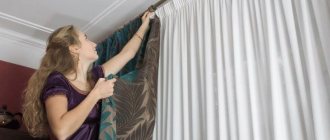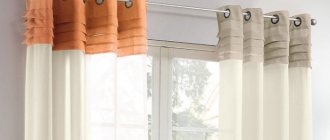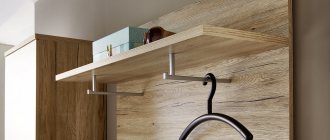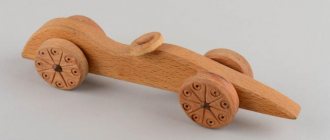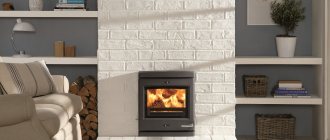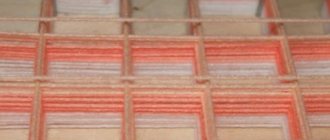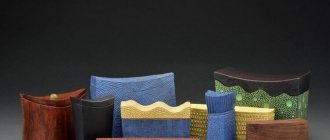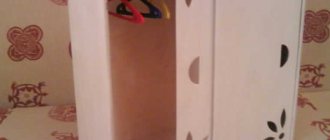Before hanging curtains correctly, you have to take into account many nuances, including how to secure them to the curtain rod. After all, not only the design, but also the functionality of the paintings largely depends on this. Curtains with hooks are one of the most convenient and versatile solutions in this regard. But in order to choose them correctly, you should familiarize yourself with the entire richness of the assortment and find the most suitable option for a particular case.
Curtain hooks - their features
There are many ways to hang curtains on a curtain rod, but curtain hooks are the most common of them. We are talking about those elements that are attached to rings, and about independent fastenings. Most often they are used on profile cornices mounted on a wall or ceiling, but if necessary, a suitable option can also be selected for round or string models.
The hook fastening can be used without a cornice; for this you will need to fix special wall hooks at a certain distance from each other; for example, below are several photographs of this method of hanging. This option is an ideal solution when you plan to hang a light curtain that will not be moved during use.
Plastic and metal-plastic hooks are capable of holding light to medium-weight fabric. When decorating window openings with heavy curtain fabrics, it is better to use metal hooks, installing grommets on the curtains or sewing patches on them.
The main advantage of such fasteners is that the canvases hung on hooks can easily and freely move along the entire length of the cornice in both directions. If necessary (for example, if the curtains need to be washed), they can be easily removed, and if the hook breaks, it can be easily replaced with a new one.
Nuances of wall mounting
If you attach the curtains to the sides, this will visually expand the room and allow more sunlight to pass into it.
The holder plays an important role in the design of the window and is an accessory that is always in sight. Therefore, it must necessarily correspond to the surrounding environment and the stylistic decision of the room.
The level of fastening of the pick-up can affect the visualization of the window opening (expand or lengthen it).
Wall mount
How to attach to curtains
Usually the hooks are attached to a special tape, previously sewn to the upper edge of the fabric, which already has loops for this purpose. Hooks for curtain tape do not come with it, but they can always be found in specialized stores. The following video shows how to assemble the braid:
Sometimes (this method was mainly used 20-30 years ago) the loops are sewn directly on the curtain, at the very top, without using tape. In this case, it is advisable to strengthen the upper part of the curtain with an additional narrow (2-3 cm wide) strip of fabric. The only drawback of this method is the scrupulousness and monotony of sewing on a sufficiently large number of hooks.
How many loops need to be sewn or used on the tape is decided individually. The optimal distance between hooks is 10 cm. The larger it is, the deeper the folds on the curtains will be when they are drawn, and vice versa, the smaller the distance between the loops, and therefore the hooks, the less expressive the folds will be.
We also offer below a video on how to attach hooks to curtain tape before hanging the curtain on the ceiling cornice:
When the cornice is a ceiling rail, attaching curtains to hooks becomes the only option. Hooks for ceiling curtain rods are usually not included with the rail. They are bought separately, inserted into the tape and then strung into the cornice itself, as in the video:
Mounting options
The following methods are used to attach curtain tiebacks to the wall:
- Below the window sill line by 20-30 cm. This method contributes to a significant visual narrowing of the window and is used for heavy curtains. It is important to note that with this option of attaching the curtains to the wall, a limited amount of sunlight enters the room. This is an excellent option for windows that do not have a very attractive panorama.
- Above the window sill level (at a distance of 2/3 from the floor surface). The method assumes that 1/3 of the length of the curtains will be at the top, and the rest of the fabric will remain at the bottom. The option is suitable for medium-heavy material and provides enough light.
- At the level of the window sill. The most common method, harmoniously dividing the plane of the curtain and giving a lot of light.
How to choose the right method for attaching curtains? It depends on the required level of illumination of the room, the intended purpose and style of the room.
At the level of the window sill, fasteners for curtains are used to the wall in the nursery or living room; below it is customary to attach curtain holders in cases where privacy and darkness are needed (in the office, library), and above the level of the window sill, curtains or drapes are attached in the kitchen.
Options for attaching curtains also involve mounting the holder on only one side of the window. This method is advisable if the opposite side of the window is occupied by a closet or balcony door.
Classification
Curtain and curtain hooks for wall and ceiling cornices are distinguished by material of manufacture and design. For their manufacture use:
- high quality plastic;
- metal (mainly brass, aluminum and steel);
- metal-plastic is a modern combined material.
Plastic options are suitable for light and medium weight curtains. In addition to the most affordable price among products of this type, they have another undoubted advantage - noiselessness when moving along the ledge. But over time, plastic hooks wear out and lose their shape, which entails a violation of the overall composition. This is caused by the curtains sliding off their hinges due to deformation of the hooks.
Hooks for curtains in the bathroom can be chosen either plastic or metal-plastic, or metal, chrome-plated on the outside, as in the photo below.
Metal curtain hooks are more expensive, but also more reliable. They do not deform during use and firmly fix the curtain fabric, preventing it from sliding down. Their disadvantage is noise. In addition, the characteristics of this fastener very much depend on the quality of the metal. If the fasteners are made from cheap raw materials or with poor technology, over time they will rust and ruin the curtains that are hung on them. It is better to give preference to metal products with anti-corrosion coating.
Metal-plastic is the optimal material in terms of price and quality. It combines the advantages of the two previous types and does not have their disadvantages. Curtain hooks made of metal-plastic are more expensive than plastic products, but cheaper than metal ones, are absolutely silent and keep their shape perfectly throughout their entire service life.
There are different types of curtain hooks depending on their design. They are:
- Closed and open. Hanging curtains on open models is quicker and easier, but there is a possibility that the fabric will slip off the hook, for example, if you pull it sharply. Closed hooks are equipped with a latch. Thanks to this, the loops do not slip off their folded part. It’s also convenient that you don’t need to remove them from the curtains when washing them.
- Hidden or decorative. Decorative hooks for curtain rods are used in cases where the interior concept requires or allows the presence of additional accessories that attract attention to the curtains. But still, standard fastenings, invisible, hidden in the folds of fabric, or under the console, are more popular.
- Transitional and basic. The main models include those that serve as independent direct fastening. Transitional hooks-clamps connect loops, clips, eyelets and are used mainly on round cornices.
In order not to spoil the presentable appearance of the curtains due to possible deformation or corrosion of the hooks, it is recommended to change them every two years.
How to attach a ceiling cornice - common methods
Typically, the included instructions suggest installation using the screws and plugs included with the cornice. It is not necessary to do this; each master decides independently how and on what fasteners to install the ceiling curtain rod.
How to screw a ceiling cornice through the holes
For all structures installed directly on the ceiling, the housing must have holes for self-tapping screws. It is enough just to transfer the location of the holes with markings to the ceiling and perform the fastening as is done for any suspended structures.
Attaching the ceiling cornice to the wall using brackets
Mounting the case on wall brackets is somewhat more complicated, since, in addition to ensuring the strength of the fasteners, it is necessary to maintain the horizontal alignment of the cornice relative to the window or ceiling. In this case, they resort to a little trick.
Ceiling model with adjustable bracket shelf reach
One of the brackets is placed on a horizontal rod and fixed using a screw built into the shelf, the second is mounted in advance on the wall. The entire structure is lifted to the ceiling, connected to the installed support and the optimal location on the ceiling is found. Then all that remains is to transfer the points through the bracket to the wall.
Next is a matter of technique, the holes are drilled, the remaining bracket is hammered in and attached to the wall. The cornice is returned to the installed support, the horizontal position is checked again with a building level and fixed with screws on the supports.
How to attach a cornice to the ceiling with glue
The use of adhesive compositions could be considered the most convenient and simplest option for installing a curtain rod body on the ceiling. But, despite all the temptingness of the idea, the scheme is not popular, since the strength of fastening to the ceiling with glue is inferior to fastening with self-tapping screws.
This is largely due to the low quality of the glue and non-compliance with the technology for gluing the body to the ceiling. If you have good glue and know exactly how to use it, then you can glue it, but if you only have “Liquid Nails” or “Moment” on hand, it’s better not to risk it.
What nuances to pay attention to when choosing
When choosing hooks for curtains and drapes, you need to take into account their compliance:
- weight of the curtain composition;
- frequency of its operation (moving or hanging stationary);
- design of curtains and interior in general;
- loop size;
- type of cornice.
Thus, before hanging curtains, you should first find out how long they will last without breaking or deforming and securely holding the curtains in the required position. In addition, you must take into account the type of cornice. For example, products attached to rings are perfect for round cornices, while bohemian consoles are best complemented with plastic hooks, which are designed for curtains with rollers.
There is no need to save on curtain accessories unless absolutely necessary. It would seem that fastening is a trifle, but it can also nullify all efforts to create a harmonious environment. Therefore, despite the fact that hooks are very convenient and versatile, before choosing them or any other method of hanging curtains on a cornice, you need to think through the entire design of the curtain composition and its compliance with the overall style of the interior.
Application of curtain tapes
In order to understand how to hang tulle on a curtain tape, you need to understand what kind of product it is in principle. In the sewing department, braid for assembling curtains means a strip made of textiles using a material such as polyester. This choice is due to the fact that this type of fabric is not afraid of water and does not “shrink” under its influence.
The main purpose of the curtain strip is to form folds and gathers along the upper edge of the curtain
On a note! The main purpose of the curtain strip is to form folds and gathers along the upper edge of the curtain.
They are created using a cord placed inside such an assembly. In this case, the ends of such a cord are tied with a knot or secured with a special clamp.
If you have little experience in sewing curtains with such an assembly, you can study the videos posted on thematic sites dedicated to cutting and sewing.
If you have little experience in sewing curtains with such an assembly, you can study the video posted on thematic sites dedicated to cutting and sewing
Mounting tape allows you to create the following types of fabric drapery:
- Standard, which creates even folds on the fabric. However, their appearance will depend on how dense a particular fabric is. The thickest fabrics make it possible to get large and voluminous drapery, while thin fabrics will give you small and thin folds.
- Counter pleats. They form on dense, but not too rough fabrics. They look best on a plain material made of wool.
- Folds in the form of bows. They are usually used to decorate curtains and curtains.
- Made in a cylindrical shape.
In addition to its good appearance, the mounting tape has excellent technical qualities. For example, it contains ready-made loops for hanging curtains on a cornice. At the same time, such loops have different lengths, which allows you to place the curtains at different levels - this allows you to adjust their height.
In addition to good appearance, the mounting tape has excellent technical qualities
If you want to figure out how to hang curtains on curtain tape, you will need to keep in mind that today there are about 70 different types of mounting strip, among which two groups can be distinguished: transparent - for tulle and thin curtains and opaque - for thick curtains.
Such loops have different lengths, which allows you to place the curtains at different levels - this allows you to adjust their height
Making a curtain holder using the kanzashi technique with your own hands
Kanzashi style tiebacks look very special and are easy to make.
In order to make this product, you will need a satin ribbon 5 cm wide. 2 DVDs and hot glue.
The basis for the pick-up can be a wire bent in a certain way or a plastic bottle cut out from a pattern
First you need to prepare the base. To do this, take a disk, measure approximately 1.5 cm deep into the disk, and use a soldering iron or a heated utility knife to cut out the workpiece.
The further production order is as follows:
- Wrap the disc with textile tape. Secure the free end of the tape with hot glue. Repeat the same procedures with the 2nd disc.
- Attach the kanzashi to the curtain using sushi chopsticks.
- If desired, decorate the tie with flowers.
- Attach the finished holder to the curtain.
Types of curtain holders
Types of holders
Today, choosing curtain holders is quite difficult.
The huge abundance of these decorative parts forces you to think not only about your own preferences, but also about the fact that the acquired holders reflect the interior of the entire room, corresponding to its spirit and style.
Holders for curtains or curtains differ in their manufacture:
- Wooden holders.
- Plastic holders.
- Their holders are metal.
- Fabric holders.
- Combined holders.
The choice of holders directly depends on the weight and type of curtains.
If heavy curtains are used to decorate the window, then the holders should be the most bulky, capable of holding this particular fabric.
Master class: attaching curtain tiebacks
Any interior without curtains will look boring and unattractive.
But even if you select them correctly, you may not fully achieve the desired result. And then hooks can come to the rescue; by attaching them, you can solve several functions at once. Let's try to figure out what they are like (with examples in the photo) and how to make them without the help of others.
Elegant curtains with tiebacks
Hello my readers!
Today I would like to tell you about such an important element as curtain tiebacks. These decorative gizmos can transform the appearance of even the most ordinary curtains beyond recognition.
Standard sizes of curtain tiebacks.
Curtain tiebacks are most often made about 70-80 cm long (35-40 cm when folded) and 7-10 cm wide.
Fabric tiebacks must be glued with thick adhesive for strength. Loops are sewn along the edges of the tie-back, with the help of which the tie-back is hung on a decorative hook. The decorative hook, in turn, is screwed to the wall - what a system!
How is the height of curtain tiebacks determined?
Tiebacks are most often hung at a height of about 1 m from the floor - at the level of the window sill or a little higher. It’s better to naturally orient yourself in place - grab the curtain with a tie and try to lower it lower or raise it higher.
As you like best, attach a hook for picking up at that level.
The height of the tiebacks visually changes the appearance of the curtains. Compare 2 photos. In the first photo, the tiebacks are placed closer to the ceiling. This placement makes the window visually taller and narrower. In the second photo, the tiebacks are placed below the window sill. In this case, the window and ceiling will appear lower, and the wall with the window itself will appear wider. These techniques can be used if you need to adjust the proportions of the room.
What types of curtain tiebacks are there?
The most common types of tiebacks are made of fabric. They are made from the same material as the curtains themselves. The main thing is that the fabric must be dense.
In addition, curtain tiebacks are often made from various beads or artificial flowers. It is better to use such tiebacks with plain curtains, so that the design and color of the curtains do not “compromise” with the colorful colors of the tieback.
To see how beautiful and different pick-ups can be, watch the video I prepared for you.
